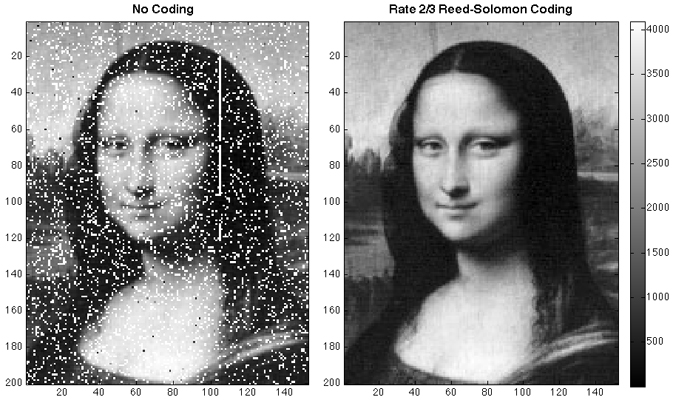In January, 2013, NASA scientists beamed an image of the Mona Lisa from Earth to the Lunar Reconnaissance Orbiter (LRO) spacecraft as part of the first demonstration of laser communication with a satellite at the moon. The iconic image traveled nearly 240,000 miles in digital form from NASA’s Goddard Space Flight Center in Greenbelt, Maryland. By transmitting the image piggyback on laser pulses that are routinely sent to track the spacecraft’s postition, the team achieved simultaneous laser communication and tracking.
It’s the first time anyone has achieved one-way laser communication at planetary distances, according to principal investigator David Smith of the Massachusetts Institute of Technology. It’s nice to have the Mona Lisa be the first message!
Precise timing was the key to transmitting the image. The scientists divided the Mona Lisa image into an array of 152 pixels by 200 pixels. Every pixel was converted into a shade of gray, represented by a number between zero and 4,095. Each pixel was transmitted by a laser pulse, with the pulse being fired in one of 4,096 possible time slots during a brief time window allotted for laser tracking. The complete image was transmitted at a data rate of about 300 bits per second.
The laser pulses were received by an instrument on the LRO, which reconstructed the image based on the arrival times of the laser pulses from Earth.

The success of the laser transmission was verified by returning the image to Earth using the spacecraft’s radio telemetry system.
Turbulence in Earth’s atmosphere introduced transmission errors even when the sky was clear. To overcome these effects, the scientists used Reed-Solomon coding, which is the same type of error-correction code commonly used in CDs and DVDs. The experiments also provided statistics on the signal fluctuations due to Earth’s atmosphere.
Bottom line: In January, 2013, NASA scientists beamed an image of the Mona Lisa from Earth to the Lunar Reconnaissance Orbiter (LRO) spacecraft as part of the first demonstration of laser communication with a satellite at the moon.











